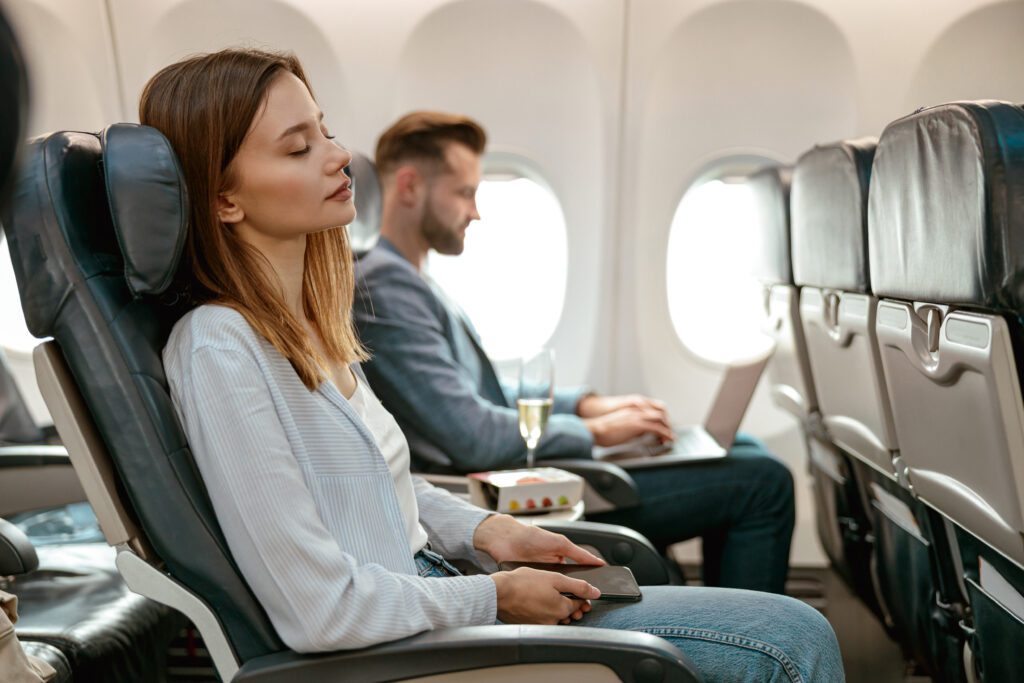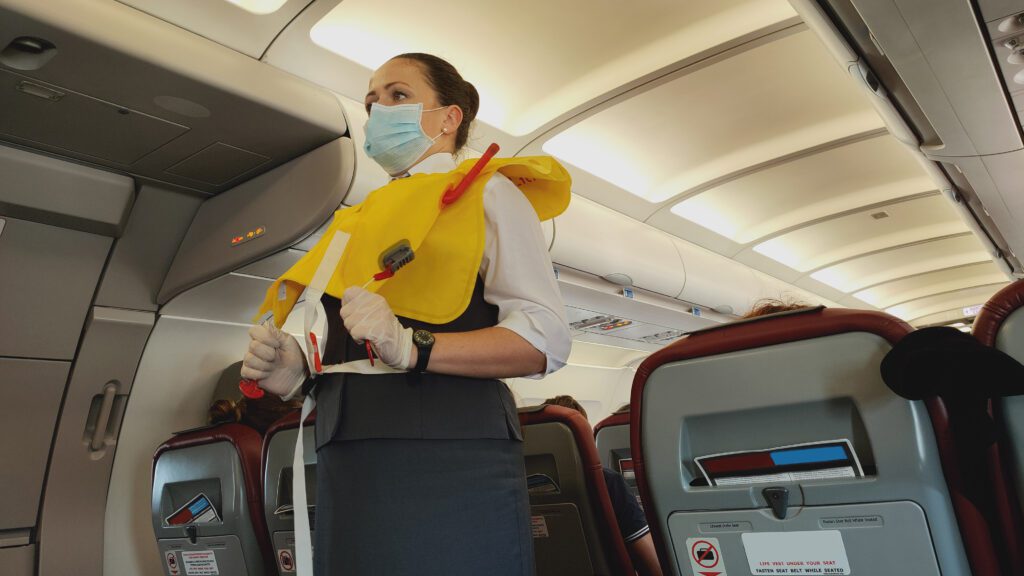Friendly Note: FreeJupiter.com shares general info for curious minds 🌟 Please fact-check all claims—and always check health matters with a professional 💙
Air travel is statistically one of the safest forms of transportation. Still, many passengers want to know where the safest place to sit on an airplane is. Whether due to fear of flying or a desire to minimize risk, the question keeps coming up.
Aviation authorities rarely give a definitive answer. Airlines avoid this discussion because every crash is different, and safety varies based on multiple unpredictable factors.
However, independent studies, crash data, and survival statistics provide compelling insights. This article dives into the numbers and expert opinions to help you understand what seat may offer the best odds in a worst-case scenario.
Front, Middle, or Back: Where Survivability Varies Most
A comprehensive analysis by Time Magazine in 2015 reviewed 35 years of Federal Aviation Administration (FAA) crash data. According to their findings, passengers seated in the rear third of the aircraft had a 32 percent fatality rate. Those in the middle had a 39 percent rate, and those in the front third had a 38 percent rate. In other words, the rear of the plane had the highest survival rate overall. While no seat guarantees safety, statistically speaking, sitting in the back of the plane may improve your odds if something goes wrong.
Aisle or Window? Why Seat Position Matters in Emergencies
Beyond front versus back, your seat’s proximity to an aisle or window can also affect survival. In case of an emergency evacuation, aisle seats allow for quicker movement. Research shows that passengers within five rows of an emergency exit have higher survival rates. A window seat may be more comfortable but may trap you if the row ahead is blocked. Aisle seats closer to the exit give the fastest escape route, which can mean the difference between life and death when every second counts.

Over the Wing: Myth or Advantage?
Many travelers assume sitting over the wing is safest because that section is structurally reinforced. This assumption is not entirely wrong. The wings are close to the plane’s center of gravity and provide structural strength. In some crashes, the middle section over the wings remained intact longer. However, if fuel tanks in the wings ignite, those seats could be at greater risk. The real takeaway is that over-wing seats are not inherently safer but may offer some structural benefits depending on the crash scenario.
Exit Rows: The Double-Edged Sword
Exit row seats are often promoted as premium for their extra legroom, but they also come with safety considerations. Passengers in these rows are expected to help in an emergency. FAA guidelines require you to be physically capable and willing to assist. In return, you get closer proximity to the exits. This can significantly improve your escape time. However, in a chaotic evacuation, the responsibility of assisting others may delay your own escape. For physically fit and mentally prepared passengers, exit row seats offer one of the best survival chances.
Read More: SpaceX Loses Contact With Spacecraft During Starship Mega Rocket Test Flight
The Role of Seat Cushioning and Brace Position
Another overlooked factor is the seat design itself. Modern aircraft seats are built to absorb impact and reduce injury risk. The FAA requires seat cushions and seatback materials to pass flammability tests. In addition, the brace position taught in safety demonstrations reduces whiplash and injury during impact. Studies show passengers who follow safety briefings and brace correctly during crashes are more likely to survive. Regardless of your seat location, knowing how to position your body can be just as crucial as where you sit.
The Type of Crash Changes Everything
It is essential to remember that no crash is the same. A water landing has different risks compared to a high-speed runway overrun or midair explosion. In the 2009 Hudson River landing by Captain Chesley Sullenberger, rear passengers were among the last to evacuate as water filled the fuselage. In other accidents, the front section was the most damaged on impact. The safest seat can vary dramatically based on how and where the crash occurs. This is why aviation safety experts rarely declare one area as universally best.
Fire and Smoke: The Real Killer
One of the leading causes of death in airplane accidents is not the crash itself, but the smoke and fire that follow. Most victims die from inhalation of toxic fumes before they can escape. In such cases, sitting closer to an exit significantly improves chances. Passengers near the tail often have more time to react before smoke reaches them. However, smoke rises quickly in a confined space. This is why paying attention to exit row locations and counting the rows to them can be lifesaving.
The Impact of Modern Safety Design
Airplanes today are built with crashworthiness in mind. Reinforced seat structures, improved emergency lighting, fire-resistant materials, and intuitive safety signage all contribute to higher survival rates. The Boeing 737 and Airbus A320 families, for example, have shown strong safety performance in real-world incidents. These modern aircraft also offer better cabin pressurization and more stable fuselage designs. Still, no design can eliminate risk entirely. The best safety comes from a mix of aircraft technology and personal awareness.
The FAA’s Stance on Seat Safety
The FAA does not officially recommend any particular seat as safest. Their position is that every seat meets rigorous safety standards. According to the FAA, the safest thing you can do is follow crew instructions, pay attention to the safety demonstration, and read the safety card. They stress that survival depends more on behavior and preparedness than on seat location. This aligns with findings from post-crash interviews showing passengers who knew their nearest exits and followed crew directions had higher survival rates.
Not All Cabins Are Equal
Seat safety also varies by airline and aircraft model. Low-cost carriers may cram more seats into the same airframe, reducing aisle width and spacing. This can slow down evacuations. Larger aircraft with double aisles tend to offer better exit flow, especially on long-haul flights. Additionally, seat layout changes between models. Some newer designs, like the Boeing 787, use advanced composite materials that respond differently in crashes. Always check the seat map before selecting your place, and favor airlines with strong safety records.

Survivors’ Stories Tell the Real Tale
Real-life survival stories often reflect the importance of awareness over seat choice. In the 1985 Air India crash, passengers near the back of the plane had higher survival rates. In the 1989 United Airlines Flight 232 disaster, those seated near the wings and tail had a better chance of survival after a catastrophic engine failure. In contrast, the 2013 Asiana crash in San Francisco saw the tail section suffer the worst damage. Survivor reports show that those who remained calm and followed evacuation procedures were more likely to get out alive.
Statistics Are Not Guarantees
Even though rear seats have shown lower fatality rates, these numbers are averages. A seat’s safety can change depending on where the plane crashes, the speed of impact, the angle of descent, and the type of terrain. Survivability is also affected by passenger age, physical condition, whether seatbelts are fastened, and even what luggage is blocking aisles. Safety statistics offer helpful insight, but they are not rules. The data should inform decisions, not cause panic or irrational fear.
Read More: Airline Announces Controversial New Fine For People Taking Part In Common Plane Habit
What the Experts Say
Aviation experts often echo a common theme: the safest seat is one that lets you stay calm, alert, and responsive. Flight safety specialist Christine Negroni points out that in emergencies, passengers have 90 seconds to exit before flames or smoke make escape nearly impossible. She recommends choosing a seat within five rows of an exit and studying the safety card. David Learmount, a former safety editor at Flight International, also emphasizes that knowing how to act quickly beats relying on where you sit.
Safety Tips That Matter More Than Seat Choice
If you want to boost your odds in a crash, focus on preparedness. Always fasten your seatbelt when seated. Put your phone away during takeoff and landing. Count how many rows are between you and the nearest exits. Wear shoes during takeoff and landing instead of sandals or slippers. Store bags properly under the seat to avoid tripping. And above all, pay close attention to the crew’s safety instructions. These habits have a far greater impact on survival than simply sitting in the back row.
Does First Class Help or Hurt?
While first class seats offer comfort, they may not always be the best for survival. They are usually at the front of the plane, where crash impact is often strongest. In some accidents, the nose of the plane was crushed or separated entirely. However, first class passengers tend to exit first in normal conditions, giving them an edge in quick evacuations. Safety in first class depends largely on the crash type and the aircraft’s final position after impact.
Children and Safety Seats
Many parents wonder where to sit when flying with a child. Experts recommend using FAA-approved child restraint systems instead of lap seating. These systems offer better protection in turbulence and crashes. Rear seats may be preferable for families, as they tend to have lower fatality rates and are farther from fuel tanks. Sitting together as a family and reviewing exit strategies with older kids can also increase chances of survival.
Best Practice Over Best Seat
If you want to know where the safest place to sit on an airplane is, the most data-supported answer is in the rear third of the cabin, preferably an aisle seat near an exit. However, behavior matters more than location. Knowing where your exits are, following instructions, and reacting quickly make a bigger difference than choosing a specific seat. Crashes are rare, and when they do occur, preparedness often outweighs positioning.
Smart Choices, Not Scared Ones
Fear of flying is understandable, but air travel remains incredibly safe. The safest seat on an airplane is not a magic shield but one part of a larger survival picture. Stay informed, stay calm, and make smart choices. Use your seatbelt, know your exit plan, and stay alert. If you want the best shot at walking away from a crash, combine smart seat selection with even smarter behavior. That is the real key to surviving the unexpected.










